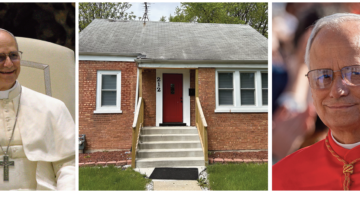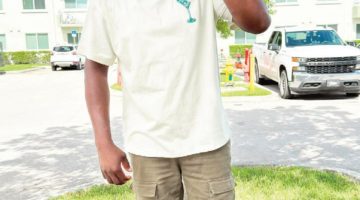ALARMING NUMBERS: Prompted state officials to take life-saving action for lowincome families. STOCK PHOTO
Miami – Blacks and other minorities are more likely to drown than their white counterparts merely because they never learned how to swim, according to the Center for Disease Control and Prevention.
Drowning deaths in the U.S. were on the decline for decades, but a new CDC report divulged that fatalities have been increasing since 2020, especially among children between the ages of 1 and 7.
Florida has seen the highest number of drowning deaths as any state with 11,200 fatalities since 2019, averaging 3,733 drowning per year.
More alarming, the Florida Department of Children and Families reported that 98 children in Florida died from such accidents in 2021, marking the highest number of child drownings in the state since 2009.
Blacks, Hispanics and Asian Americans represented most kid drownings, and the CDC suggested most never learned how to swim because their parents couldn’t afford lessons.
The alarming numbers prompted state officials to take life-saving action by offering low-income families swimming lesson vouchers.
Republican Gov. Ron DeSantis signed SB 544 directing the Department of Health to create such a voucher program at no cost to families with an income of no more than 200 percent of the federal poverty threshold.
Families also must have one or more children four years of age or younger to qualify, as in $60,000 for a family of four.
The voucher program will be financed by $500,000 included in the bill, which goes into effect July 1.
State Sen. Travis Huston from St. Johns County sponsored the legislation after his nephew, a non-swimmer, fell into a pool but was able to reach above water where he was pulled out by friends.
“Granted, I was fortunate enough to put my kids through the program,” Huston told reporters after his bill was signed into law. “Some of those in Florida are less fortunate, and they need the help to save lives.”
Many kids enjoying summer vacation will take a dip in the pool or enjoy local beaches to cool off from the record heat forecasters predict in the coming months. Learning how to swim can mean the difference between life and death.
The National Safety Council reports drowning is the second leading cause of preventable death for children, such as an eight-year-old boy who died after he was found unresponsive in the bottom of a Fort Lauderdale pool last week. A 9-year-old girl nearly drowned in a Lauderhill pool last month and was rushed to the hospital in critical condition. She has since recovered.
Since it typically takes several lessons to truly master the skill, swimming lessons could end up costing parents several hundred dollars per child.
Miami-Dade County offers lessons at some parks and recreation facilities at up to $60 per session. The classes are taught by certified American Red Cross water safety instructors.
Broward County offers lessons at C.B. Smith Park in Pembroke Pines and T.Y. Park in Hollywood at $50 per session for kids ages 2 to 10, with classes limited to six students per session.
For families who don’t qualify for the state vouchers, some organizations offer free lessons including the Drowning Prevention Coalition of Palm Beach County and the YMCA.
The Drowning Prevention Coalition of Palm Beach County offers free lessons for kids from ages 2-12 yearround at 18 aquatic facilities throughout the county.
The YMCA offers free swimming lessons through its Safety Around Water programs, but classes and participants are limited during the year.
With 2021 marking the highest number of child drownings in Florida in 12 years, the COVID-19 pandemic might have played a role.
“The pools shut down right in the middle of their swimming lessons,” said Jason Brito, a volunteer lifeguard at Miami-Dade pools. “They didn’t complete the class and thought they learned enough about swimming safely. It could take several months, especially for non-swimmers, to learn how to swim.”
Janice Greenwood, who owns a swimming school in Miami for kids ages 2 to 10, said some of her students stopped in the middle of their lessons primarily because their parents could no longer afford her rates. Greenwood said about 50 percent of her students are minorities.
“I told their parents to not let them swim in pools or at the beaches unless they have adult supervision because they didn’t have the skills to swim on their own,” she said. “Some parents believe their kids spend two weeks learning how to swim and they learned enough. They need to complete the entire class including the most important one, how to avoid accidents in and around the pools.”
Greenwood said her rates were affordable until she had to raise her rates to stay in business after losing so much revenue from 2020 and 2021.
“That’s what I was facing,” she said. “Without the fees, I wouldn’t be in business.”
Though kids are at a higher risk of accidental drowning, the CDC reported that about 40 million American adults don’t know how to swim although 55 percent of them did take swimming lessons at some point in their lives.
Adults 65 and older experienced the second-highest rate of drowning.












No Comment